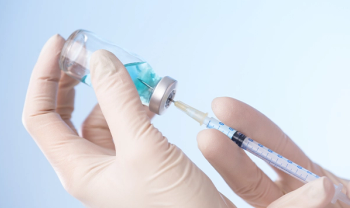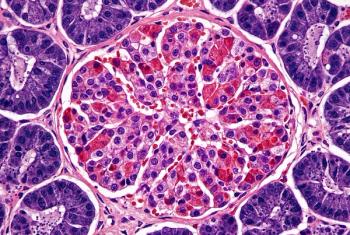
Study: 4F-PCC may be beneficial over plasma in patients needing warfarin reversal for urgent surgical, invasive procedures
Prothrombin Complex Concentrate [Human] (Kcentra) is non-inferior and superior to plasma for rapid international normalized ratio (INR) reversal and effective hemostasis in patients needing Vitamin K antagonist (VKA, eg, warfarin) reversal for urgent surgical or invasive procedures, according to a study published in The Lancet. INR is a standardized method of assessing the effects of VKA therapy commonly used by clinicians
Prothrombin Complex Concentrate [Human] (Kcentra) is non-inferior and superior to plasma for rapid international normalized ratio (INR) reversal and effective hemostasis in patients needing vitamin K antagonist (VKA, eg, warfarin) reversal for urgent surgical or invasive procedures, according to a
Kcentra,
Related:
Each year, approximately 3 to 4 million people in the United States use warfarin to prevent blood clots from forming following a stroke, heart attack, heart valve surgery, deep vein thrombosis/pulmonary embolism, or certain types of irregular heartbeat, such as atrial fibrillation. Because of a deficiency in blood clotting factors induced by warfarin treatment, patients are at increased risk of bleeding, especially if undergoing an urgent surgery or invasive procedure.
The multicenter, open-label, phase 3b randomized trial enrolled adult patients needing rapid reversal of VKA therapy prior to an urgent surgery or invasive procedure Results showed that in 168 evaluable patients, 90 percent of patients treated with Kcentra achieved effective hemostasis, compared to 75% of patients treated with plasma. Additionally, INR reduction to ≤1.3 at 30 minutes after the end of infusion was achieved in 55% of patients treated with Kcentra versus 10% of patients treated with plasma. Incidences of adverse events, serious adverse events, thromboembolic events, and deaths were similar between the Kcentra and plasma groups. In post-hoc analysis, the median time from start of infusion to start of urgent surgical procedure was shorter in the Kcentra group (3.6 hours [IQR 1.9–10.8]) than in the plasma group (8.5 hours [IQR 2.8–18.7]); (P=.0098).
The doses of Kcentra (25 units/kg, 35 units/kg, or 50 units/kg) based on nominal Factor IX content and plasma (10 mL/kg, 12 mL/kg, or 15 mL/kg) were calculated according to the patient’s baseline international normalized ratio (INR) (2-<4, 4-6, >6, respectively). The observation period lasted for 90 days after the infusion of Kcentra or plasma.
The prespecified secondary analysis also noted treatment differences in favor of Kcentra. The findings were as follows:
- One hour after the start of infusion, 47 patients (54%) in the Kcentra group had an INR of 1.3 or lower compared with no patients in the plasma group (P<.0001)
- Plasma levels of vitamin K-dependent coagulation factors and antithrombotic Proteins C and S were significantly higher in the Kcentra group than in the plasma group at 30 minutes, 1 hour, 3 hours and 6 hours after start of infusion (all P values <0.05)
- Few patients in either group received red blood cells (14 patients [16%] in the Kcentra group and 12 patients [15%] in the plasma group)
- Mean number of red blood cell units transfused per patient was similar between groups (0.3 units [SD 0.9] for Kcentra vs 0.4 units [1.0] for plasma, P =0.91)
The safety profile of Kcentra was generally similar to that of plasma.
- Forty-nine patients (56%) in the Kcentra group and 53 patients (60%) in the plasma group had an adverse event.
- Thromboembolic adverse events (6 patients [7%] receiving Kcentra versus seven patients [8%] receiving plasma)
- Fluid overload or similar cardiac events (3 patients [3%] receiving Kcentra versus 11 patients [13%] receiving plasma)
Additionally, late bleeding events occurred in (3 patients [3%] receiving Kcentra versus 4 patients [5%] receiving plasma).
Kcentra is also approved for the urgent reversal of warfarin therapy in adult patients with acute major bleeding.
Notably, the median time from start of infusion to start of the urgent surgical procedure was shortened in the 4F-PCC group (3.6 h [1.9–10.8] compared with the plasma group (8.5 h [IQR 2.8–18.7]) P=.0098; post-hoc analysis).
The primary end points were:
- Hemostatic efficacy for the time period from the start of infusion of Kcentra or plasma until the end of the urgent surgery/invasive procedure
- The proportion of patients that achieved INR of ≤1.3 at 30 minutes after the end of infusion of Kcentra or plasma
The secondary end points were:
- Time to INR reduction (INR ≤1.3) from start to infusion
- Units of red blood cells (defined as packed red blood cells and whole blood) given from start of surgery to 24 hours after start of surgery
- Proportion of patients receiving red blood cells from start of surgery to 24 hours after start of surgery
- Plasma levels of vitamin K-dependent coagulation factors and antithrombotic Proteins C and S
“In an emergency situation, Kcentra is easy to access as it does not require blood-type matching or thawing. It also enables faster infusion time and requires significantly less volume than plasma,” said Antoinette Mangione, MD, PharmD, CSL Behring’s senior director of North America Medical Affairs.
Read next:
Newsletter
Get the latest industry news, event updates, and more from Managed healthcare Executive.






















































